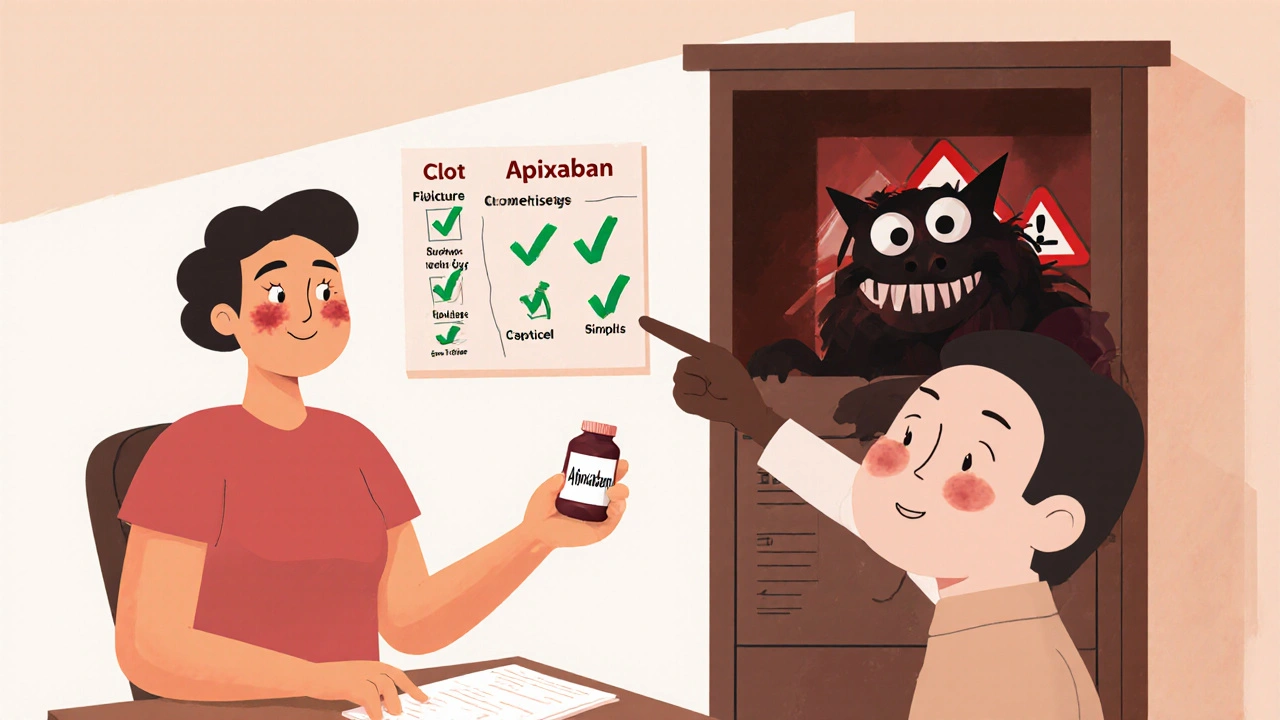
Why Your Blood Thinners Matter More Than You Think Before a Cosmetic Procedure
If you're taking blood thinners-whether it's warfarin, apixaban, rivaroxaban, or even daily aspirin-and you're thinking about getting a cosmetic procedure, you're not alone. More than 25% of people undergoing skin or facial cosmetic treatments are already on some kind of anticoagulant. That’s not a small number. It’s the new normal. But here’s the thing: most people assume they need to stop their medication before a procedure. That’s what doctors used to say. And it’s still what some clinics tell you today.
But that advice is outdated. And in many cases, it’s dangerous.
Stopping your blood thinner isn’t harmless. In fact, it can be riskier than keeping it. A 2014 survey of over 160 Mohs surgeons found 46 serious blood clot events-including strokes and deaths-after patients stopped their anticoagulants for minor skin procedures. Five-fourths of those happened after stopping warfarin. Three people died. That’s not a side effect. That’s a preventable tragedy.
The real question isn’t whether you should stop your medication. It’s: what kind of procedure are you having? And what kind of blood thinner are you on? Answer those two questions right, and you can avoid unnecessary bruising, bleeding, or even a life-threatening clot.
Not All Blood Thinners Are the Same
When people say "blood thinner," they’re talking about three very different kinds of drugs. Each has its own rules.
- Warfarin (Coumadin) is the old-school option. It takes days to build up or wear off. You need regular blood tests (INR levels) to make sure it’s in the right range. If your INR is above 3.5, your bleeding risk goes up. Below that? Most minor procedures are fine without stopping.
- DOACs-like apixaban (Eliquis), rivaroxaban (Xarelto), dabigatran (Pradaxa)-are newer. They work faster, leave your system faster. Half-life? Around 9 to 17 hours. That means if you skip your morning dose the day before a procedure, most of it’s already gone by the time you’re on the table.
- Antiplatelets-aspirin, clopidogrel-are not even technically anticoagulants. They stop platelets from clumping. And guess what? Multiple studies show they don’t significantly increase bleeding in minor skin procedures. You can usually keep taking them.
Here’s the kicker: warfarin is the biggest culprit when it comes to bleeding complications. One JAMA Facial Plastic Surgery study found patients on warfarin were 3.8 times more likely to bleed during or after surgery than those not on it. And they were more than 7 times more likely to get an infection afterward. Aspirin? No such link. DOACs? Minimal difference.
What Procedures Are Safe? What’s Risky?
Not every cosmetic procedure carries the same risk. Think of it like this:
- Low-risk procedures: Shave biopsies, small excisions under 2 cm, laser treatments, chemical peels, Botox, dermal fillers. These are tiny, superficial, and involve minimal blood vessels. For these? Keep your blood thinners. Stopping them adds more risk than it prevents.
- Moderate-risk procedures: Larger excisions, some facial skin resurfacing, minor eyelid surgery. For DOACs, you can often just skip the dose the morning of. For warfarin? Keep it going if your INR is under 3.5. Aspirin? No change needed.
- High-risk procedures: Facelifts, rhinoplasty, breast augmentation, body contouring, Mohs surgery on the nose or ears. These involve major blood vessels, deep tissue, and tight spaces where even small bleeds can ruin results or cause scarring. Here, your doctor may ask you to pause DOACs 24-48 hours before. Warfarin might need to be stopped earlier, with INR checked. But even then, bridging with heparin is rarely needed-and often makes things worse.
Here’s a real example: a 72-year-old woman on apixaban wanted a facelift. Her surgeon didn’t make her stop the medication. Instead, they scheduled the surgery for the day after her last dose. She had minimal bruising, no hematoma, and went home the same day. Her blood clot risk? Zero. Her bruising? Lighter than most patients not on blood thinners.
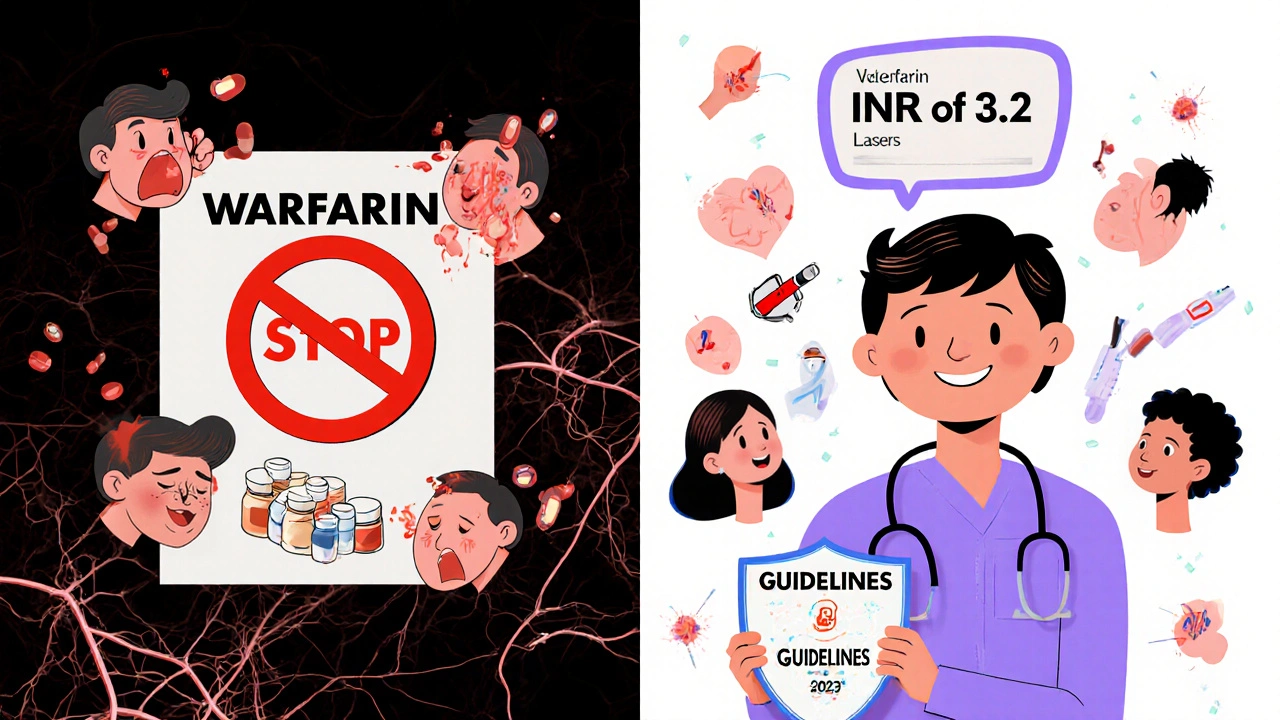
Bruising Isn’t Always a Bad Sign
Let’s talk about bruising. It’s scary. It looks bad. But it’s not always a complication. In fact, it’s often just a side effect-not a failure.
People on blood thinners will bruise more easily. That’s normal. It doesn’t mean something went wrong. It means the drug is doing its job: keeping your blood from clotting too fast. A little extra bruising after filler injections? Common. After a chemical peel? Expected. After a facelift? Unavoidable if you’re on DOACs or warfarin.
What you should worry about: swelling that gets worse after 48 hours, pain that doesn’t fade, skin turning purple or black, or a sudden increase in pressure around your eyes or neck. That’s not bruising. That’s a hematoma. And that needs immediate attention.
Don’t panic if your cheek looks like a sunset after a filler. Do call your provider if you can’t open your eye the next day.
Why Stopping Blood Thinners Can Kill You
Here’s the most important thing to understand: stopping your anticoagulant doesn’t make you safer. It makes you vulnerable to something far worse.
Think about this: if you have atrial fibrillation, a mechanical heart valve, or a history of deep vein thrombosis, your body is already on the edge of forming a clot. Your medication is the guardrail. Take it away-even for a few days-and your risk of stroke, pulmonary embolism, or heart attack shoots up.
The data is clear: the chance of a serious clot after stopping anticoagulants for minor procedures is about 0.15%. Sounds low? But your baseline risk-even with the medication-is already 0.6% to 1.1%. Stop the drug? You’re doubling or tripling your risk.
And here’s the kicker: most of these clots happen in the first week after stopping. Not during surgery. After. When you’re at home, thinking you’re fine.
There’s no magic number that makes stopping "safe." It’s not worth it.
What Your Doctor Should Be Asking You
A good provider won’t just ask if you’re on blood thinners. They’ll ask:
- What’s the name of the drug? (Not just "blood thinner")
- What’s the dose? When do you take it?
- For warfarin: What’s your latest INR? When was it checked?
- Why are you on it? (Atrial fibrillation? DVT? Heart valve?)
- What procedure are you having? Exactly?
- Have you had bleeding problems before?
If they say, "Just stop everything," walk out. That’s not care. That’s laziness.
The British Society of Dermatologists’ 2023 guidelines say it clearly: "Antiplatelet drugs (e.g. aspirin and clopidogrel) and warfarin (where the INR is <3.5) can be continued without a significant risk of bleeding following skin surgery when taken as a monotherapy."
That’s not a suggestion. That’s the standard of care.
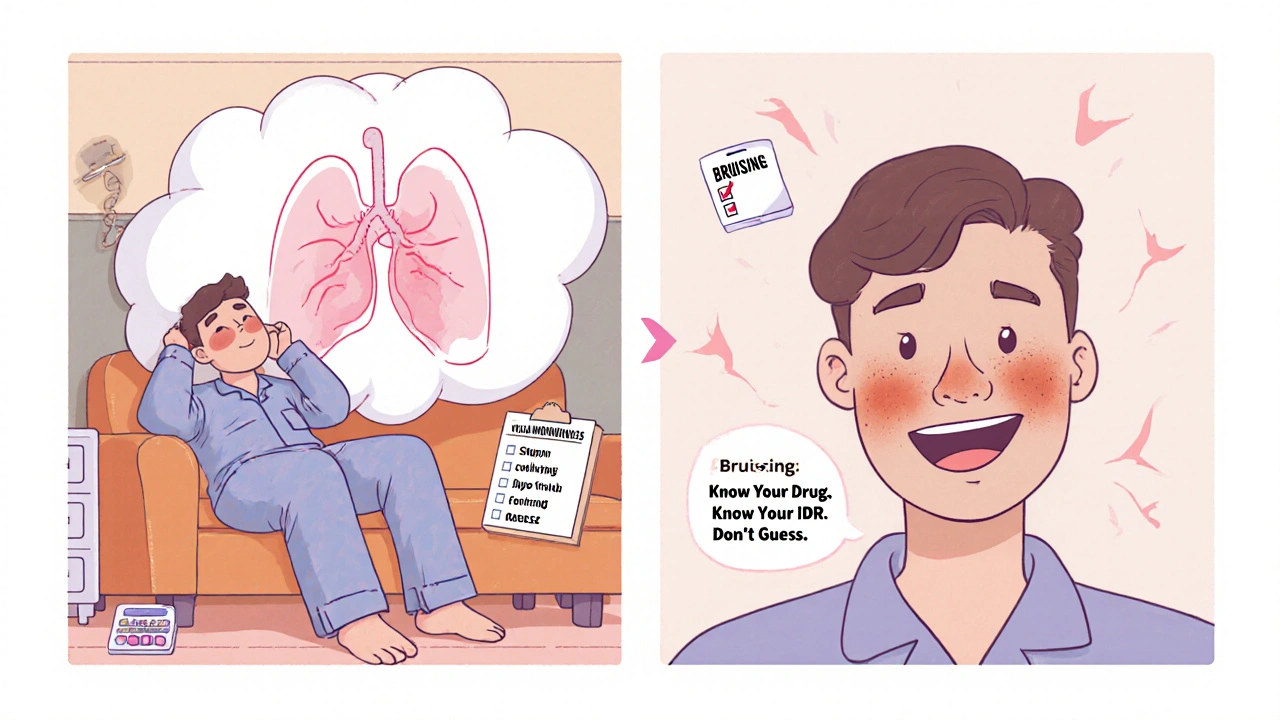
What to Do Before Your Appointment
Don’t wait until the day before your procedure to figure this out. Here’s your checklist:
- Make a list of every medication you take-including supplements like fish oil, ginkgo, or garlic pills. They can thin your blood too.
- Check your last INR result if you’re on warfarin. If you don’t know it, call your GP or cardiologist.
- Write down the name, dose, and time of day you take your anticoagulant.
- Bring your prescription bottle or a screenshot of your pharmacy record.
- Ask your cosmetic provider: "What’s your protocol for patients on blood thinners? Can I see your written guidelines?"
If they can’t answer, or say "We just tell everyone to stop," find someone else. Your safety isn’t a guess.
Bottom Line: Keep It, Don’t Quit It
For most people on blood thinners, the safest move is to keep taking them-even for cosmetic procedures.
Aspirin? Keep going.
DOACs? Skip the morning dose before moderate procedures. Otherwise, keep taking them.
Warfarin? Keep it if your INR is under 3.5. If it’s higher? Work with your doctor to adjust it-not stop it.
Stopping your medication doesn’t make you safer. It makes you vulnerable to a clot that could end your life. And for what? A little more bruising?
The science is clear. The guidelines are updated. The risk is understood. You don’t need to choose between looking good and staying alive. You can do both.
What Happens If You Do Stop?
Let’s say you listen to the old advice and stop your DOAC for a week before a filler appointment. You think you’re being careful. But here’s what actually happens:
- Days 1-2: You feel fine.
- Day 3: You’re at home, scrolling on your phone, and suddenly feel dizzy. Your chest tightens.
- Day 4: You’re in the ER. A CT scan shows a pulmonary embolism.
- Day 5: You’re on a ventilator.
This isn’t hypothetical. It’s documented. And it’s preventable.
There’s no perfect system. But the evidence is overwhelming: continuing anticoagulants for most cosmetic procedures is safer than stopping them.
Should I stop my blood thinner before a Botox injection?
No. Botox is a low-risk procedure involving tiny injections into muscles. There’s no significant increase in bleeding or bruising risk from continuing aspirin, DOACs, or warfarin (with INR under 3.5). Stopping it increases your risk of stroke or clot without any benefit to the procedure. Keep taking it.
Can I take aspirin before a facelift?
Yes. Multiple studies show aspirin does not significantly increase bleeding in facial plastic surgery. The risk of a clot from stopping aspirin far outweighs the small chance of extra bruising. Your surgeon may ask you to stop it 7-10 days before if they’re doing a very complex reconstruction-but for most facelifts, continuing is safer.
What if my INR is 4.0? Should I still proceed?
If your INR is above 3.5, your bleeding risk increases significantly. Don’t proceed without adjusting it first. Contact your cardiologist or anticoagulation clinic. They may lower your warfarin dose or give you vitamin K to bring your INR down to a safer range. Never ignore an INR over 3.5 before any procedure.
Do I need to stop my DOAC for a chemical peel?
No. Chemical peels are superficial and carry minimal bleeding risk. You can safely continue your DOAC (rivaroxaban, apixaban, etc.) without interruption. Skipping the morning dose is optional and not required.
Is bridging with heparin ever needed for cosmetic procedures?
Almost never. Bridging-switching from warfarin to heparin injections before surgery-is risky and rarely beneficial for cosmetic procedures. It increases bleeding without reducing clot risk. Guidelines from the British Society of Dermatologists and the American Society of Plastic Surgeons advise against it for elective cosmetic surgery. Only consider it in rare, high-risk cases like mechanical heart valves, and only with a specialist.

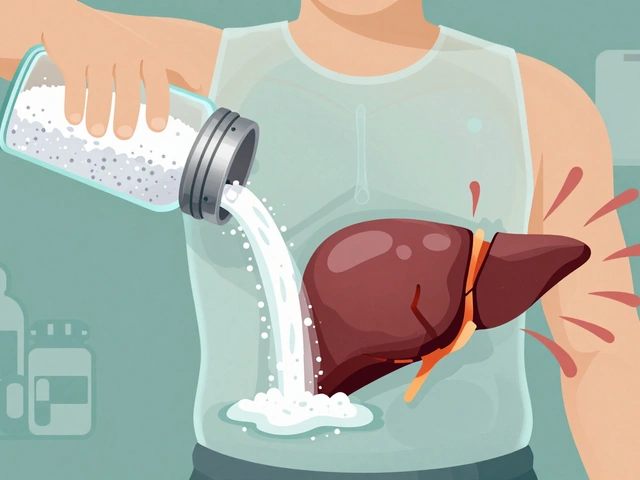

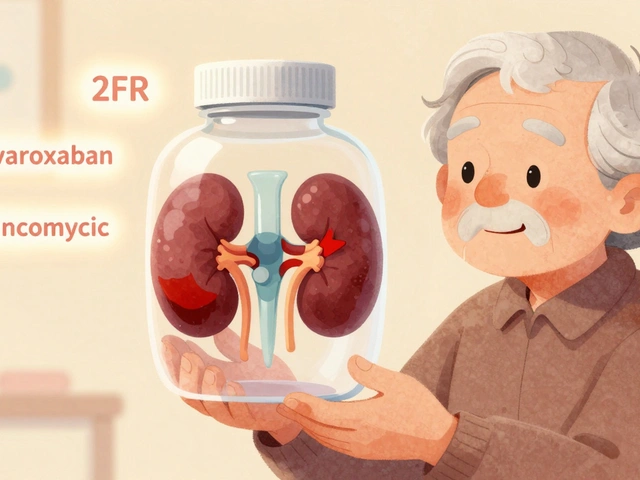
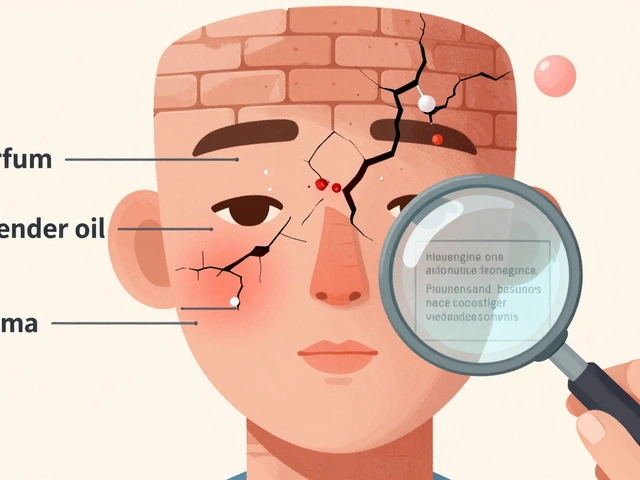

12 Comments